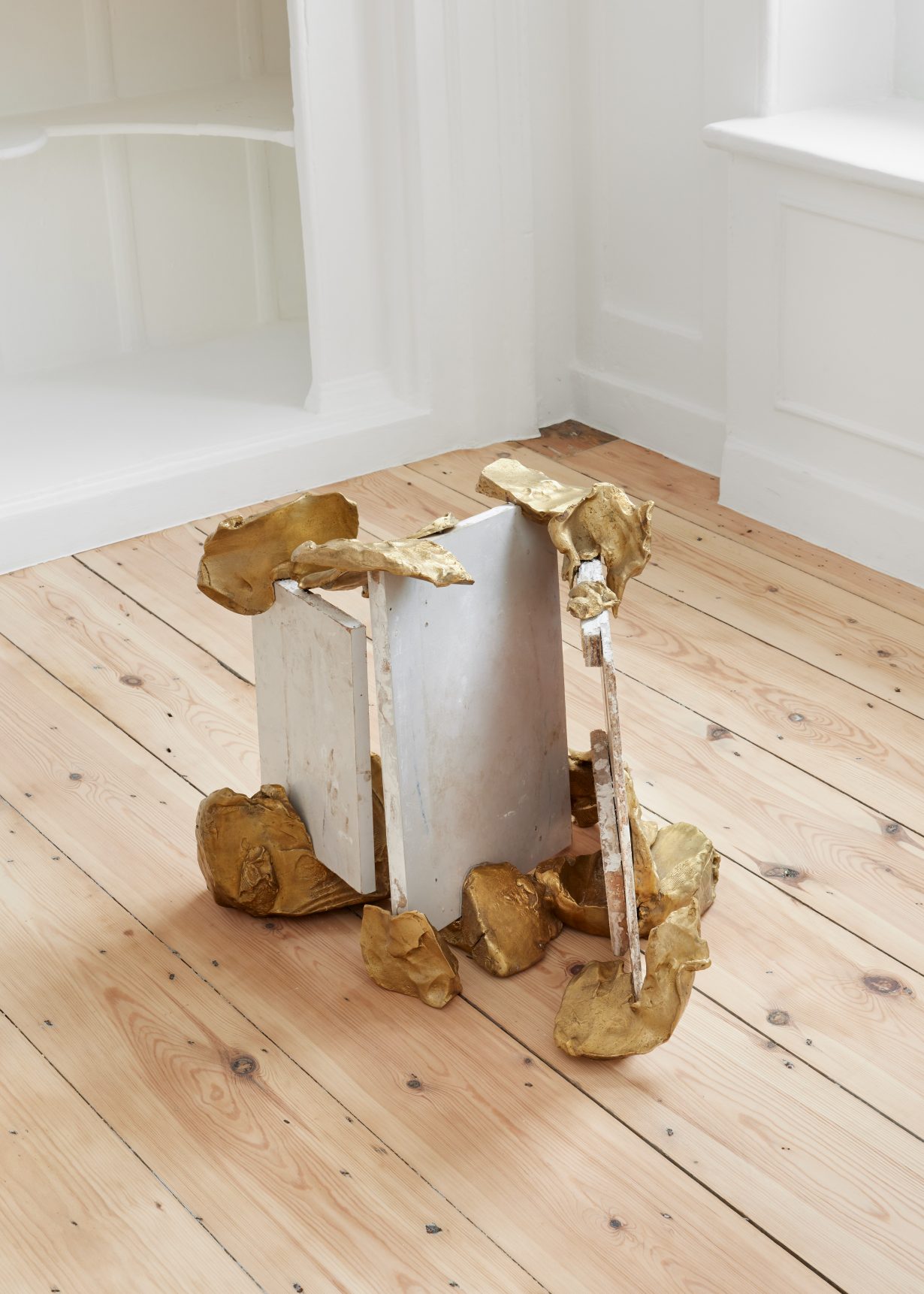Costa’s show at Emalin’s new space in London enlivens the critical tension between his scavenger sensibility and references to more refined modernist and minimalist forms
Adriano Costa struggles to take off his pyjamas to a soundtrack of nonsensical chants and grunts, pausing to flex, twerk, stand on one leg and imitate a rabbit. Then he gets on his knees amid a pile of Tesco shopping bags, chewing them, stuffing them in his pants, waving one angrily at the camera, putting another over his head. Ever-present behind him is a version of Eero Aarnio’s spherical white ‘Ball Chair’, a slick late-modernist design. Clean and still among the commotion, it becomes the straight man in a strange double act.
This film, The way my grandma taught me how to kill a chicken (the future) (2024), is projected in the first room of Emalin’s new space, the eighteenth-century Clerk’s House in East London. Staged in Costa’s messy studio, it offers one image of his practice: in a passionate frenzy, he sifts through discarded materials – towelling rags, clay offcuts, a single black feather – rearranging and transforming them in ways that affirm their value and stress their expressive potential. For one series, displayed across the show, he salvaged little moulds that were scrapped at a foundry and cast them in bronze, turning ephemeral tools into precious bas-reliefs. And his carefully crafted installations are charged by the critical tension between his scavenger sensibility and references to more refined modernist and minimalist forms: between the pyjama dance and the stylish white chair.
By the front window is a large white plinth modelled, we are told by the gallery text, after the curving elevation of Oscar Niemeyer’s iconic Edifício Copan, one of Brazil’s largest residential buildings, in São Paulo, the artist’s hometown. On the plinth’s top sit dozens of small Casas (2023–24), quirky architectural mockups made from reworked household rubbish: blocks of wood and scraps of sandpaper, a takeaway box and a Heineken keg, a jerrycan and a few wilting flowers. The grand modernist ordering of social life represented by Niemeyer’s building is confronted with the chaos it cannot suppress. Here the architectural icon becomes a mere plinth and the shantytown an assortment of delicate sculptures.

On the floor in a corner upstairs is Chorus (2024). Three rectangular pieces of particle board, branded ‘Eucafloor’, are propped upright by a swarm of wedges and twists of clay cast in bronze and buffed gold. Each plank is placed at a sharp angle to the next and tilts towards the lefthand wall. In this precarious formation and animated by the florid fixings, the panels appear to waddle like a Disney candlestick up the slanted floor.
Carl Andre’s grids of metal tiles – which Costa has referenced more explicitly in previous works – reject the pretensions of ‘high’ culture, of pedestals and decoration. Costa also incorporates flooring as an archetypal ‘low’ object, swapping crisp metal for battered particle board, but with strikingly different results. Andre admired mechanical production and disdained traditional cultural values, meaning and metaphor, asserting that ‘there are no ideas under those plates, those are just metal plates’. In Costa’s art, matter does seem to think, animated by some mysterious vitality, breaking free from the imperatives of human industry – the grid Andre so loved. The late minimalist created floor sculptures you can walk over; Costa makes the floor walk.
Scattered with such lively things, the wonky domestic interiors of The Clerk’s House feel haunted. A bent sawblade sticks out of a rough bronze mount, a black pot lies smashed by the fireplace. These discarded objects – the marginalised of the material world – seek their revenge.
ax-d. us. t at Emalin, The Clerk’s House, London, through 13 July
